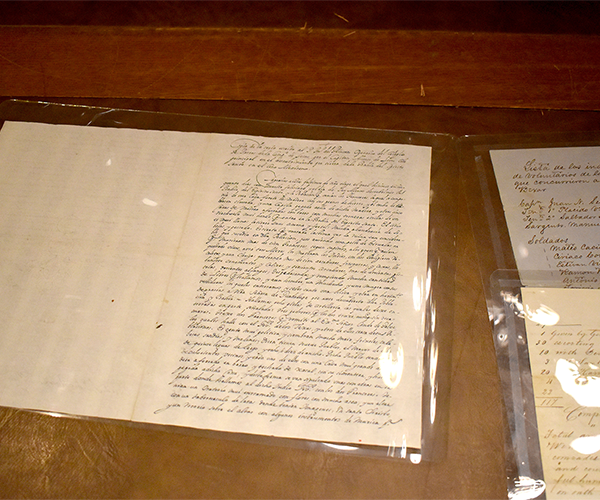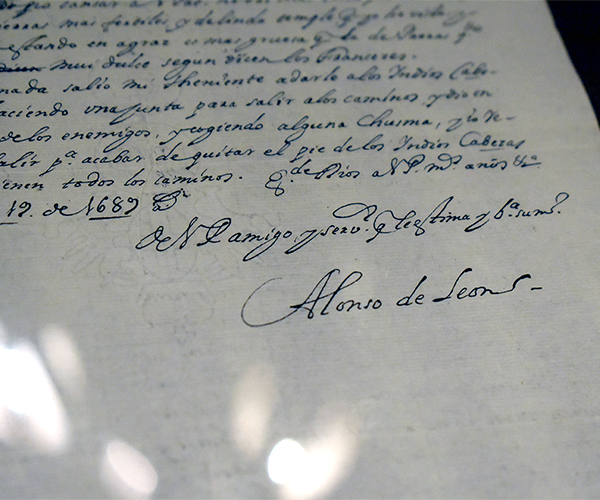
by Library News

While the words were written more than 334 years ago, the story they tell remains vivid in its description of an early Texas settlement devoid of people and life.
The letter written by Spanish explorer Alonso de León in 1689 describes the remains of the colony founded by René-Robert Cavelier, Sieur de La Salle, a French explorer. This firsthand account is now a part of the UTA Libraries Special Collections archive.
The Texas State Historical Association website stated the Spanish government tasked de León to investigate the intrusion of the French into Texas, which was under their rule.
The letter dated May 18, 1689, donated to the university by Wesley Brown, paints a detailed picture of the site seen by de León and his men.
“It is true that it was a pity to see the quite considerable ruin that (had) befallen the settlement,” de León wrote. “For there had been a smallpox outbreak in which 100 French died, according to what we learned. The few that remained alive were killed by the Indians months ago, along with two friars and clergymen.”
De León stated that they found destroyed books and personal possessions, the bodies of several people and eight pieces of artillery, which were buried for later recovery.
Archaeologists recovered the iron cannons centuries later in 1999 and are now on display at the Museum of the Coastal Bend in Victoria, Texas.

The letter written by Spanish explorer Alonso de León in 1689 describes the remains of the colony found by René-Robert Cavelier, Sieur de La Salle, a French explorer.
Later in the letter, de León describes his meeting with the people of the Caddo Nation, where they found two French colony survivors that the Caddo rescued. He describes the Caddo’s settlement in detail.
“They are very courteous people, and they cultivate a great deal of corn, beans, squash watermelon, and melons. They say that they have nine pueblos,” de León reported. “The aforesaid pueblo has more than 800 resident property owners. Each one having a large wood house dobbed with clay and thatch roof.”
Ben Huseman, a cartographic archivist, stated this letter is a window into the past, allowing people to see what de León saw as he traveled around Texas.
“This letter allows our students and researchers to have a firsthand opportunity to see a document from that period that relates to the history of Texas,” Huseman said. “There are not that many documents of this importance here at UTA. It is a tremendous summary of what happened to La Salle.”
Huseman stated that reading the letter puts you in that moment, making history more than words on a page. It makes a person realize that these were real people; these events happened and are corroborated by archeology, making the letter a “fantastic” piece of early Texas History.
Dr. Sonia Kania, UTA professor of modern languages, helped bring this chapter of the La Salle expedition to life. Her work to translate the letter was invaluable, Huseman said.
The letter of the La Salle expedition by Alonso de León is one of many items the Special Collections has in its archives.
Reading this document 334 years later allows voices from the past to be heard in the present, letting the eyewitness tell this chapter of history.
Visit their website to learn more about these items or the Special Collections Department.
Add new comment